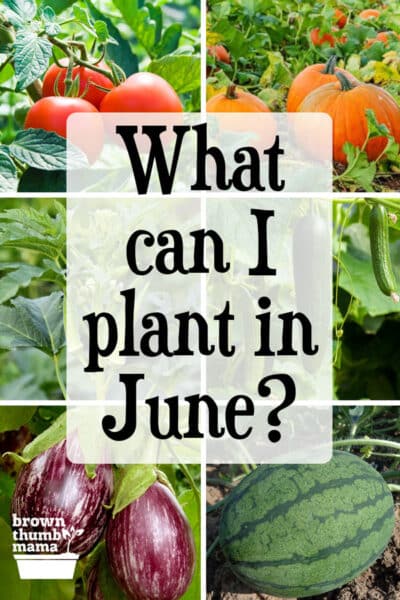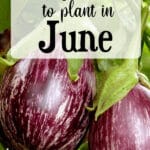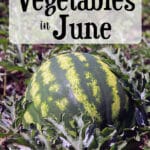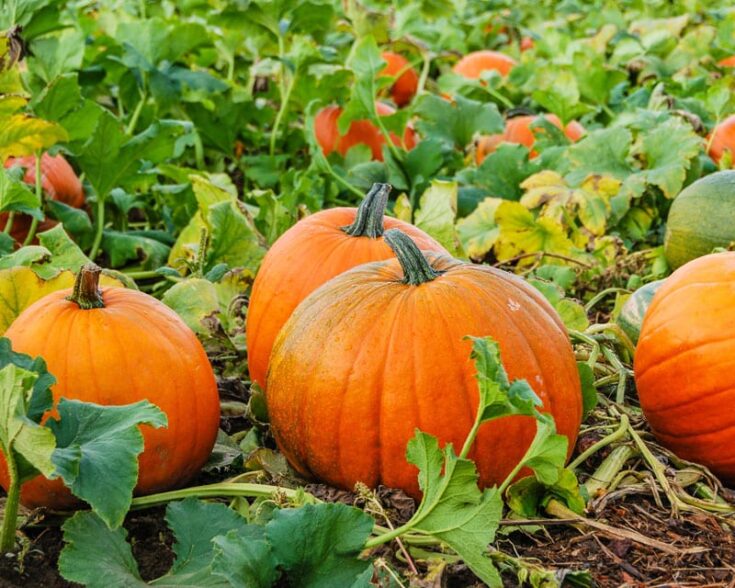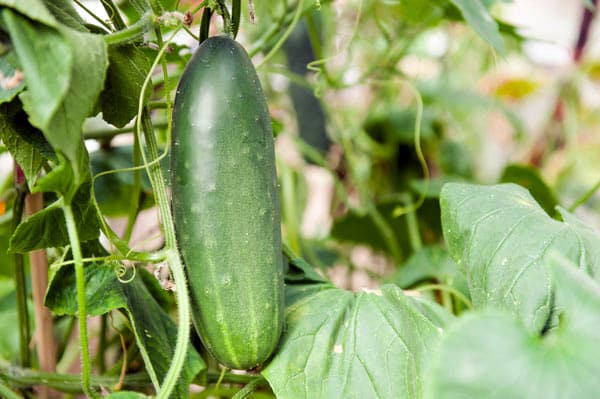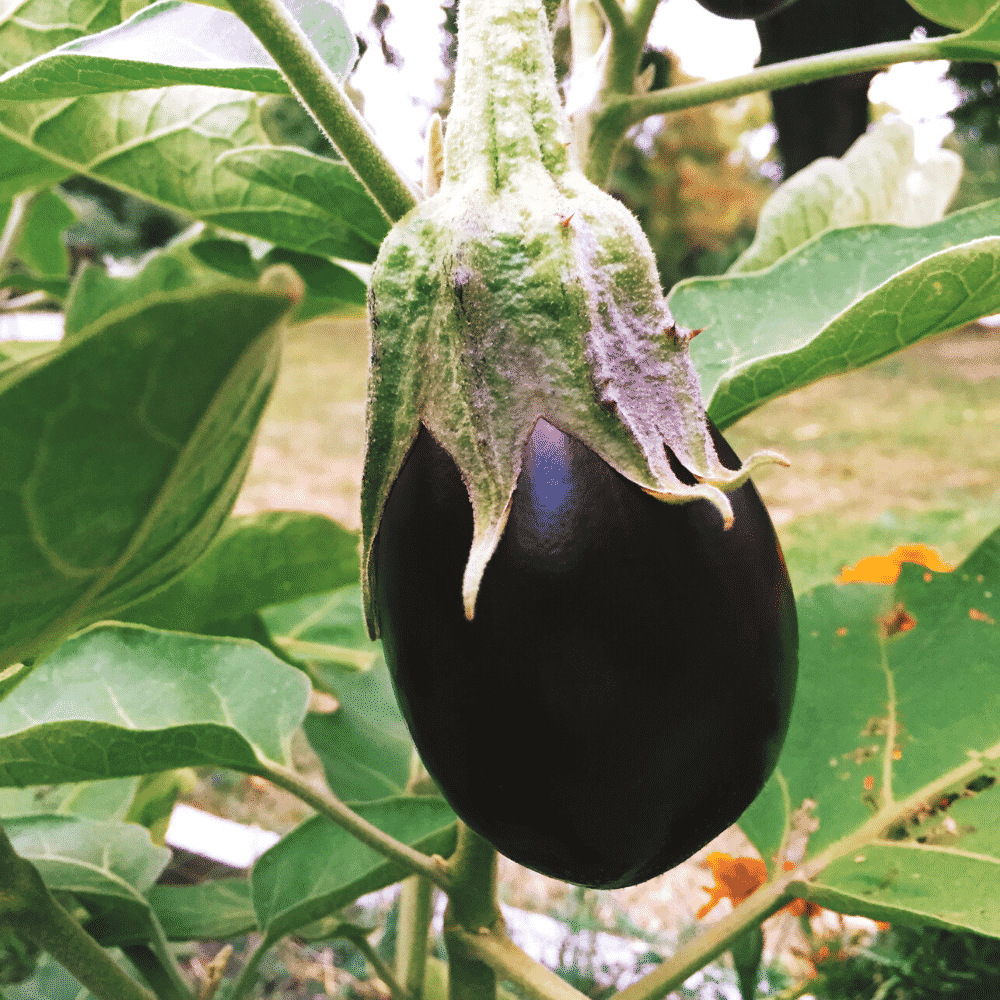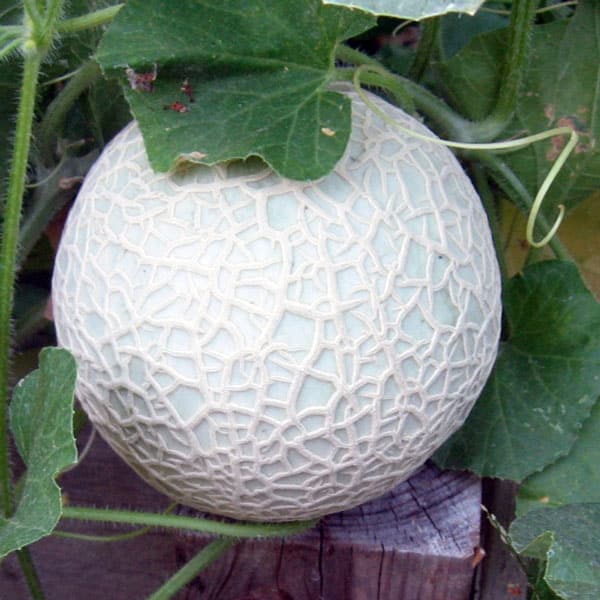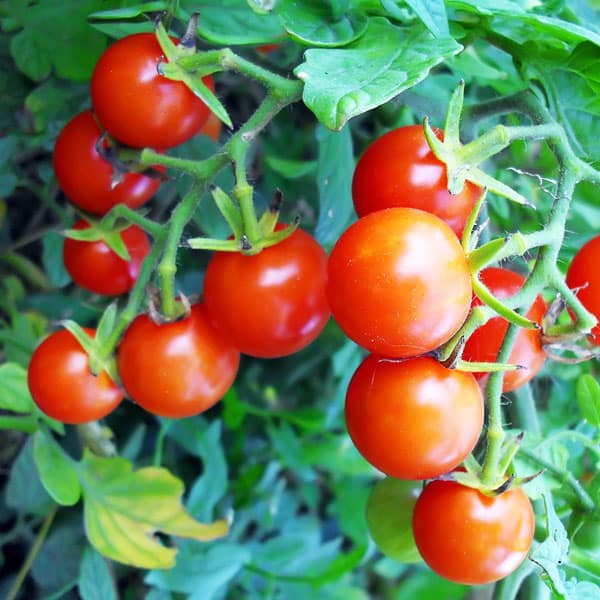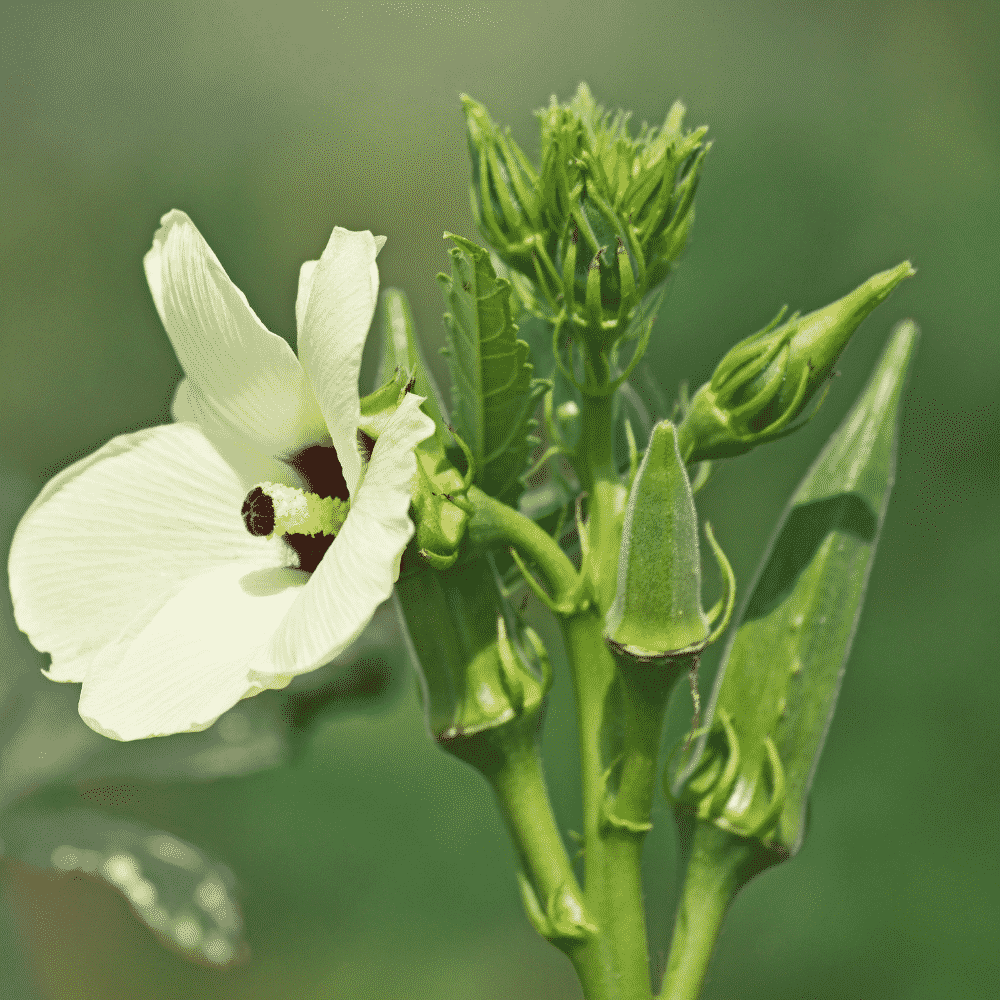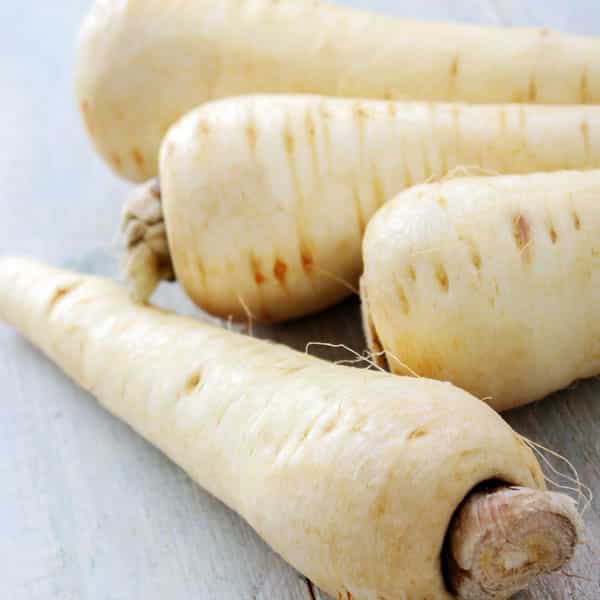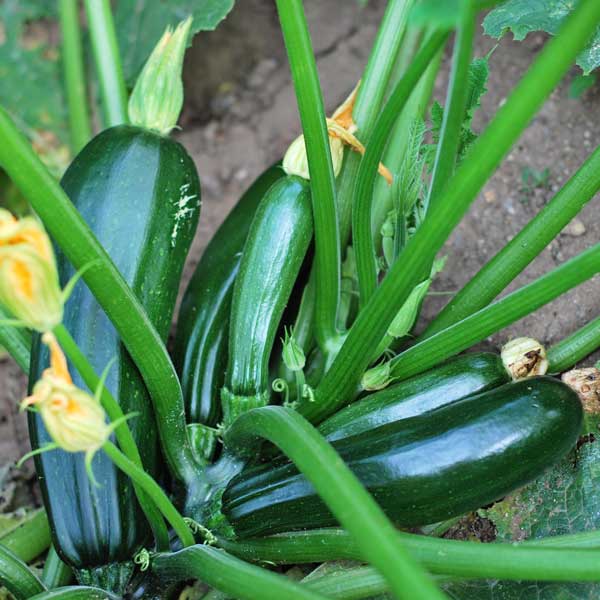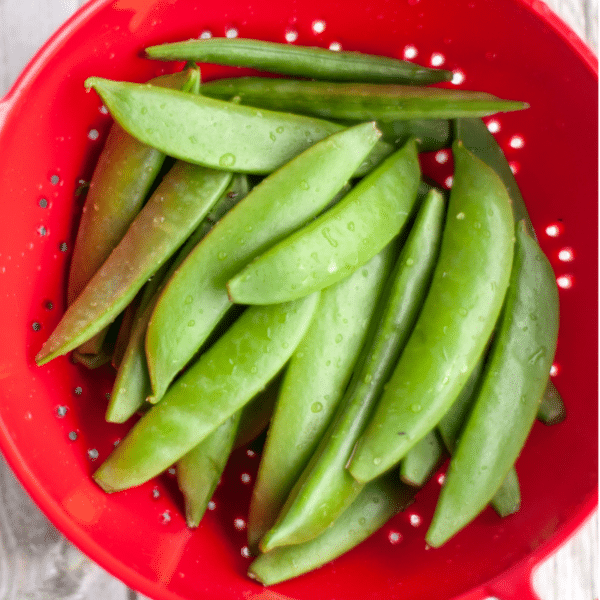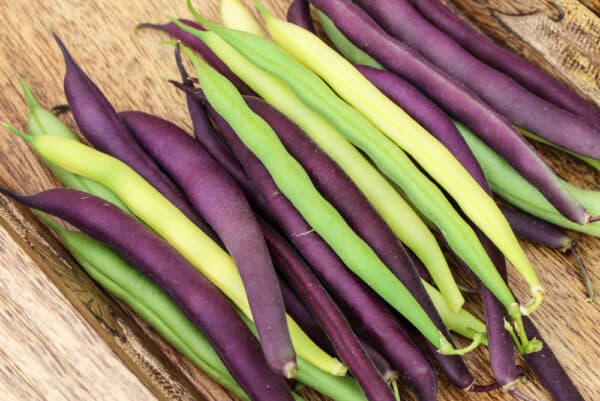This post may include affiliate links.
If you make a purchase, I'll earn a small fee at no extra cost to you.
It’s not too late to have an amazing garden! There are SO many vegetables you can plant in June. This planting guide for Zone 9 has eight vegetables you can plant in June for a great harvest, and includes recommended varieties and growing tips.
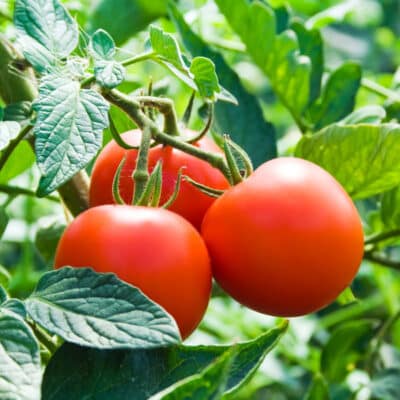
Ahhh, June. Summer is officially here, but it’s not unbearably hot yet. The soil is warm and your seeds and seedlings will be off to a great start. Let’s get out in the garden!
Are you a brand new gardener? Not sure what to plant or when to plant it? I can help.
You’ll find lots of great information in my new book, The First-Time Gardener: Container Food Gardening.
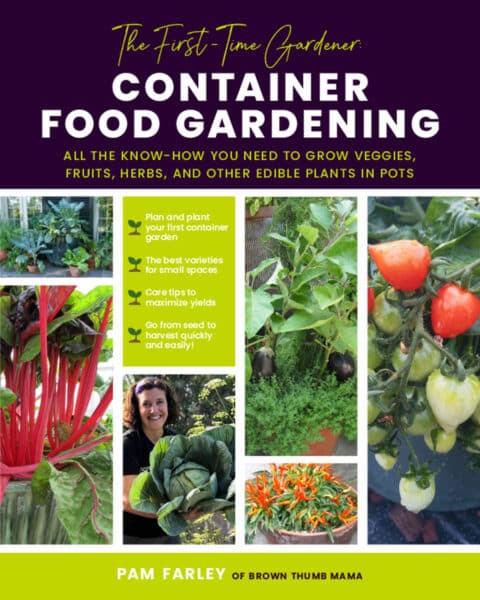
This planting guide for Zone 9 has eight vegetables you can plant in June for a great harvest this summer and fall. Not sure what planting zone you’re in? This interactive map will tell you.
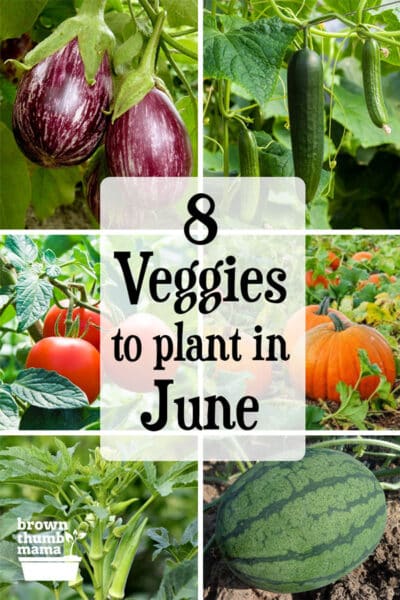
8 Vegetables to Plant in June {Zone 9}
Pumpkins are easy to grow from seed, and there are many different types--teeny decorative pumpkins, white pumpkins, carving pumpkins, pumpkins for making pies, novelty pumpkins covered in warts...it’s hard to decide.
Varieties: I like to grow Howden pumpkins for making jack-o-lanterns, and Lumina, which are white pumpkins, to surprise the kids.
Planting: Pumpkins are easy to grow and need lots of space. Here are my tips on growing and planting pumpkins.
Recipe: Once you harvest your pumpkins, save the seeds and make Roasted Pumpkin Seeds.
We have a love affair with cucumbers at our house, and we grow many different types. They’re a delicious and easy to grow summer snack.
Varieties: We grow at least three varieties of cukes from seed each year. Straight Eight for salads and slicing; Homemade Pickles for--you guessed it; and Persian Baby Cucumbers for snacking.
Planting: Cucumbers are vining plants, so you’ll need a trellis or something similar for them to climb on. I grow mine at an angle against the back fence, so the cucumbers hang down for easier picking. Learn more about growing vegetables vertically.
Recipes: We love eating cucumbers as a salad topping or sliced and dipped in ranch dressing. If you want to try something different, saute sliced cucumbers briefly in butter and serve hot with salt and pepper. I learned that recipe from The Frugal Gourmet and it’s surprisingly delicious!
Eggplant (also called aubergine) is a veggie that likes hot weather, just like tomatoes and peppers. All three of these plants are part of the Nightshade family.
Varieties: Listada de Gandia is a beautiful French heirloom eggplant. Black Beauty is another favorite for its large size and thin skin that you don't have to peel.
Planting: Plant seedlings 18 inches apart--happy eggplants grow into bushes nearly 2 feet tall and 16 inches wide. Stake them shortly after planting, or the weight of the eggplants will cause the plant to fall over.
Recipe: Eggplant is delicious when sliced, brushed with olive oil, and grilled until just soft.
Whether you’re growing watermelon, cantaloupe (also called muskmelon), honeydew, or other melons, you’ll be thrilled with their delicious flavor fresh from the garden. We grow several varieties of melon each year, and harvested a 21-pound watermelon a few years back!
Varieties: Ahhh, where to begin? We love cantaloupe, and Hale’s Best Jumbo cantaloupe is our favorite. The fruit is sweet and thick, with a small seed cavity. Cantaloupe grows on a vine, so you may want to support it with a trellis to save space.
Sweet Delight honeydew is delightfully true to its name. It produces large, sweet, and juicy melons.
Watermelon is a summertime favorite of ours. The kids love growing them and eating them, too. We like Sugar Baby watermelon because it’s small and fits in the fridge. For fun, plant Mountain Sweet Yellow watermelon because it has yellow flesh instead of pink.
Planting: Melons of all types like to be planted outdoors in warm soil. They’re heavy feeders, and appreciate soil that’s mixed with your homemade compost. Here are some tips on when to harvest your watermelon for the best, sweetest fruit.
Recipes: Try this crisp, refreshing watermelon limeade recipe on a hot, summer day. So good!
Once you’ve eaten a homegrown tomato, you’ll never want to eat those tasteless blobs from the supermarket again.
Varieties: There are hundreds of varieties of tomatoes you can grow, and many different types--slicing tomatoes, cherry tomatoes, paste tomatoes, and heirloom tomatoes.
My favorite way to try lots and lots of different tomatoes is with the Heirloom Tomato Collection from Botanical Interests. It contains seeds for seven different tomatoes, and you’ll have fun growing them all.
Planting: Plant your tomato seedlings deep, with only an inch or two sticking out of the soil. Tomato plants can be floppy and unruly, so I recommend staking them or using a heavy-duty tomato cage. Blossom end rot is a common issue with tomatoes, so be prepared with these blossom end rot prevention tips.
Recipes: Before you can enjoy your tomatoes on BLT sandwiches or by enjoying them as homemade spaghetti sauce, make sure you know the best way to wash tomatoes.
Okra, like eggplant, is a vegetable that likes hot weather. It’s tough to start them from seed (they only have a 50% germination rate), so get seedlings from the garden center if you can.
Varieties: Clemson Spineless 80 is a reliable variety. It’s called “spineless” because okra plants have tiny hairs (spines) all over them that can cause an allergic reaction. You may want to wear gloves when harvesting them.
Planting: Okra plants can get big and bushy, so give them about 2 feet of space to spread out.
Recipe: There's more to okra than breading and frying. Sheet Pan Bhindi Masala is easy and delicious.
Parsnips are persnickety…they’re hard to start from seed, but can’t handle being transplanted. This is why you don’t see parsnip seedlings at the garden center. Also, the seeds don’t keep from year to year, so you need to buy new seeds each year.
The reward for all this coddling is sweet, buttery parsnips. Roast them in the oven and you’ll see why I go to all the trouble to grow them.
Varieties: I grow All-American Parsnips, which are ready in as little as 95 days.
Planting: Plant seeds ½ inch deep and 3-4 inches apart in loose soil, and water thoroughly through the growing season.
Recipe: Peel and cut into coins or half-moons. Toss with olive oil, salt, and pepper; roast at 425F for 30-40 minutes.
Zucchini and summer squash are the easiest vegetables to grow from seed. A couple of plants will produce more squash than most families can eat! This is probably why there’s a gardeners’ holiday called “Sneak Some Zucchini on Your Neighbor’s Porch Day”.
Varieties: Cocozelle zucchini is delicious and buttery. It's beautiful, too: the dark green fruits have light green vertical stripes. Have fun in the garden with Max’s Gold summer squash, with its beautiful yellow color and Jaune et Verte pattypan squash, which looks like a stripey spaceship.
Planting: Start zucchini from seed in June and you'll be eating it as early as September. Haven't grown it before? Here’s everything you need to know about planting and growing zucchini.
Recipe: Stir-fry zucchini with bacon and onions, or shred and make Zucchini Fritters.
Want to know what to plant every month?
Knowing which vegetables to plant in each growing season ensures your plants will thrive and give you a great harvest. Check out my Vegetable Garden Planting Schedules so you know exactly what to plant each month of the year.
More of What to Plant This Month
